
Founded in 2009, California-‐based Drybar was one of the first salons to solely provide a hairstyling service known as a blowout. The service provides women a quick, affordable and pleasurable experience,and is disrupting the traditional salon industry.
COMPANY BACKGROUND
In 2008, Alli Webb began a business called Straight-at-Home, which provided in-home blowouts to women around LA. Her business and popularity quickly grew, and she realized there was a demand in the market for a service that provided affordable and high-quality blowouts. After securing a $250,000 loan from her brother, Michael Landau, former Vice President of Brand Marketing at Yahoo! and current chairman of the board of directors at Drybar, Webb opened the first Drybar salon in Brentwood, California. Currently, there are 46 Drybar locations, with over 3,000 stylists performing 100,000 blowouts a month.
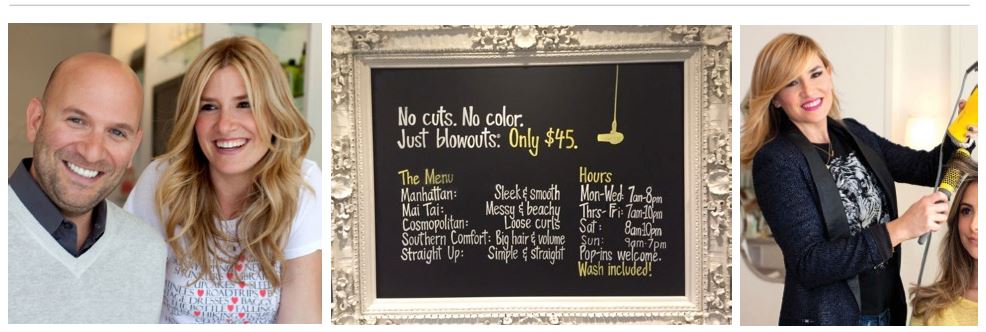
Alli Web and her brother Michael Landau
Unique Business Model
Drybar’s design revolves around real bar vernacular. The cashiers are called “bartenders” and the seven hairstyles on the Drybar “menu” are named after cocktails. Instead of a typical salon setup, Drybar seats clients facing a U-shaped bar, with their backs to the mirrors. From coaster certificates to the Happy Hour shampoo, Webb has focused on the experience, saying, “Women [should want] to come in and have fun….What’s more fun than going to your local bar?”
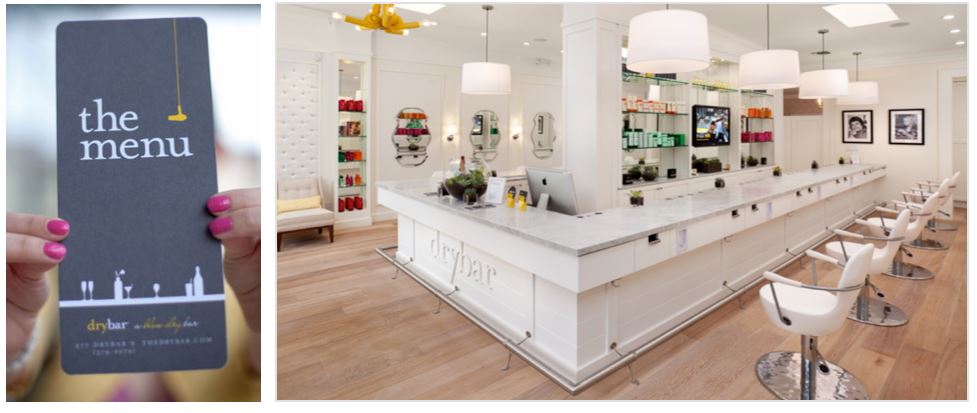
Customers can book an appointment via Drybar’s app, phone number or website. The salon experience begins with a consultation at the “bar,” where the customer flips through a look book to decide on one of seven styles that range from the “sleek and smooth” Manhattan to the “lots of loose curls” Cosmopolitan. The customer is escorted to the washroom and offered a complimentary water, coffee, wine, or champagne. One of the core components of the Drybar experience is that clients are offered a glass of champagne or wine as they are receiving a service, according to Webb and Landau.
All stylists are licensed cosmetologists. As the transformation takes place, customers face flat-screen TVs playing chick flicks such as
Bridesmaids. The movies are subtitled to counter the distinctive music and sound from the blow-dryers. Once the stylist is finished, the client is turned around for the “big reveal.” Webb recently spoke at the Terry J Lundgren Global Retailing Conference and said, “we are selling happiness and confidence. We call this the magic moment.” The beautification process takes approximately 45 minutes and the customer’s new style typically lasts three to four days.
The salons’ décor, layout and customer service are keys areas of the business model. Aesthetically, all Drybars look roughly the same, thanks to Josh Heitler, the principal of a boutique architectural firm and now a partner in the company. Heitler came up with the design elements and the reasoning behind the name Drybar is evident in the design.
PRICING
The standard Drybar blowout experience is $45 compared to other salons that typically charge $60 to $85. However, customers can purchase “Bartabs” in the form of three-, six- or 12-packs of blowouts. A six-pack, for example, costs $250, which is a $15 savings. The company also offers a $75 per month “Barfly Membership” that includes two blowouts per month and an additional free birthday blowout. Drybar offers girls under the age of 10 a “Shirley Temple” blowout for $32.
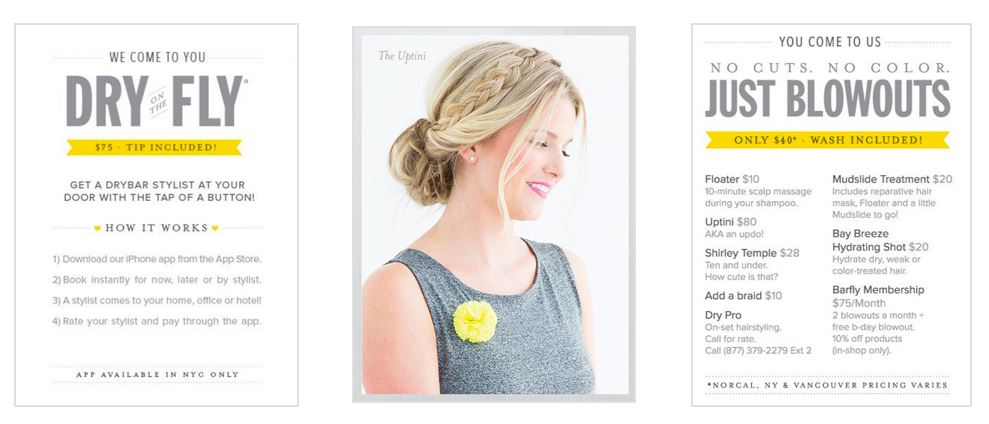
In July, Drybar rolled out an in-home blowout option called Dry-on-the-Fly. The Uber-like experience is controlled by Drybar’s new app. The customer can book a stylist to come to her home, office, gym or hotel. The app shows the nearest stylists in the area and when they could arrive. With tip included, the service costs $75, and customers pay via the app.
PRODUCT LINE
Webb, a longtime professional stylist, spent several years developing a product line specifically for Drybar and blowouts. In March 2013, she launched the company’s first line, to be sold at Sephora, QVC and Drybar locations nationwide.
The line now consists of 25 hair products, ranging from shampoo and conditioner to hairspray and mousse, as well as 10 styling tools, including blow-dryers, curling irons and brushes. The items are branded in line with the bar theme, with clever monikers like Happy Hour shampoo and conditioner, Blond Ale brightening cream, and The Chaser shine cream. The products are priced from $22–$38 and come in pastel packaging, while the styling tools are priced at $10–$195 and are decorated with the same yellow and gray motif used in Drybar locations across the country.
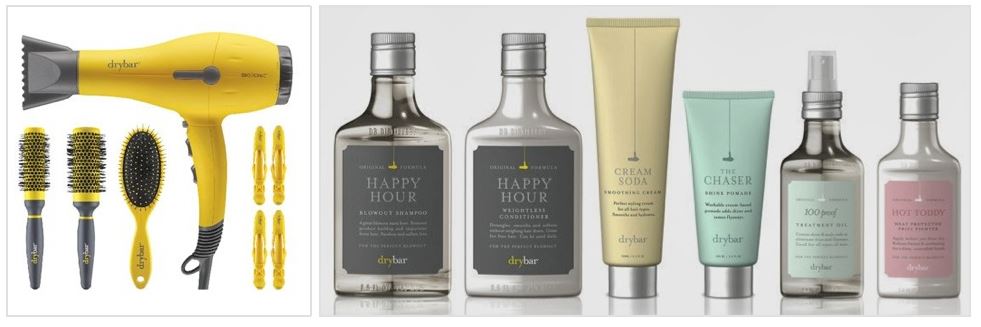
According to Webb, the top-selling item is the signature bright yellow Buttercup blow-dryer ($195). The second-most popular is the Hot Toddy heat protector/frizz fighter ($30). The products are found in Drybar shops and at Sephora as well as on QVC and the drybar.com.
DIFFERENT FROM OTHER BLOWOUT SALONS
Drybar has created an elaborate customer experience, and the company’s craft and professionalism help it attract and retain customers. It offers a seamless booking process, welcoming pre-blowout consultations and telephone hold times that are kept to a minimum. Drybar also gives every client in a particular salon a branded Rain Blows umbrella whenever it starts to rain. Cofounder Michael Landau has said, “What we’re selling at Drybar is a feeling and an experience. For 45 minutes you get to relax and be pampered, drinking a mimosa and indulging in the guilty pleasure of the latest chick flick or celebrity magazine while someone washes and brushes your hair.”
DRYBAR COMPETITION
Drybar was one of the first companies to focus solely on the blowout experience, and it has become more advanced in funding rounds than most of its peers, including BeautyBooked, Vive, Glamsquad and Blo. Dry bar has focused on bringing seasoned retail talent on board, and the team now includes, Paul Pressler, former CEO of Gap and former President of Disney; John Heffner, former OPI president and current CEO of Drybar; Janet Gurwitch, founder and former CEO of Laura Mercier Cosmetics, who joined the board from Castanea Partners. Webb says her addition was instrumental opening doors for its product line.
Drybar grew from four locations and revenue of $1.5 million in 2010 to 25 locations and revenue of $19 million in 2012. Revenue was $29 million in 2013 and $50 million in 2014. As of 2015, Drybar operates the largest blow-dry chain in the US, with 46 locations in eight states and over 3,000 stylists. The company is on track to generate $70 million in revenue, according to
The New York Times.
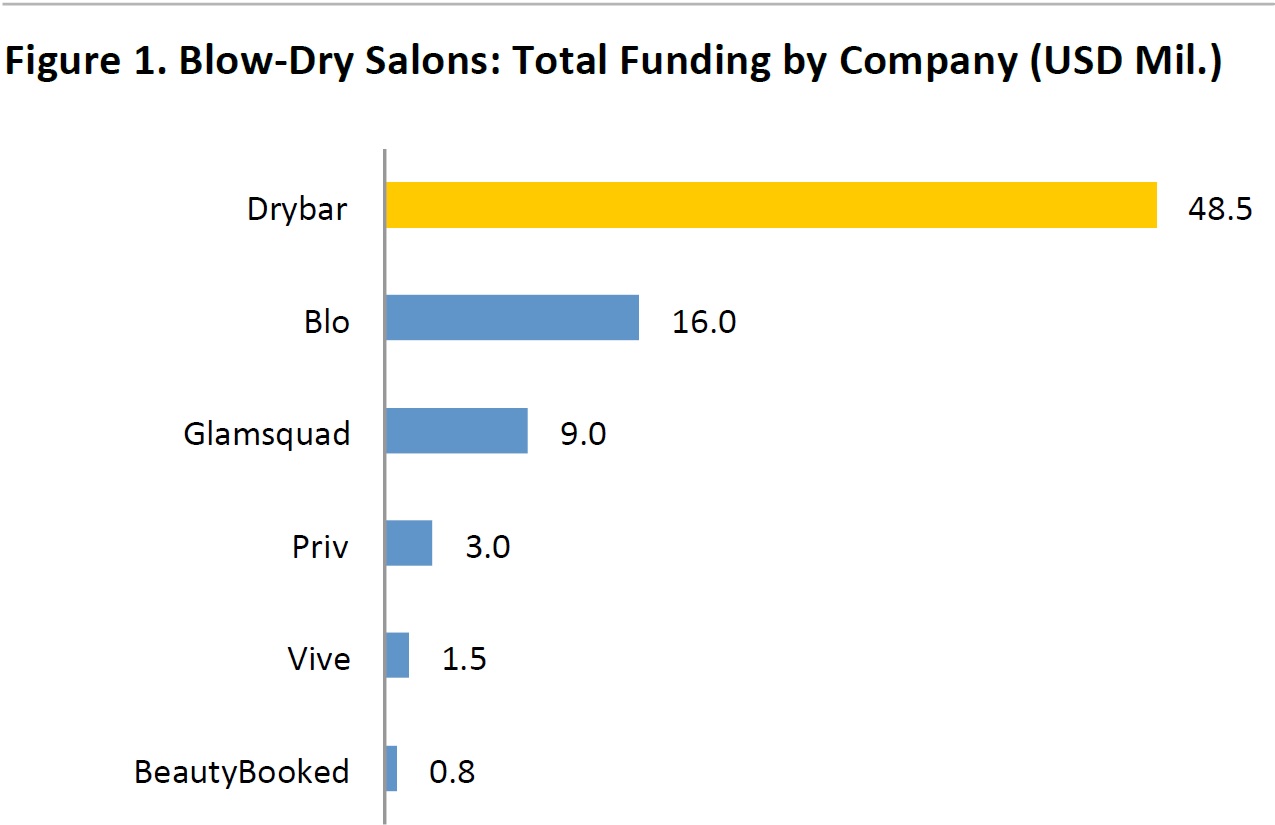
Source: Crunchbase, angel.co
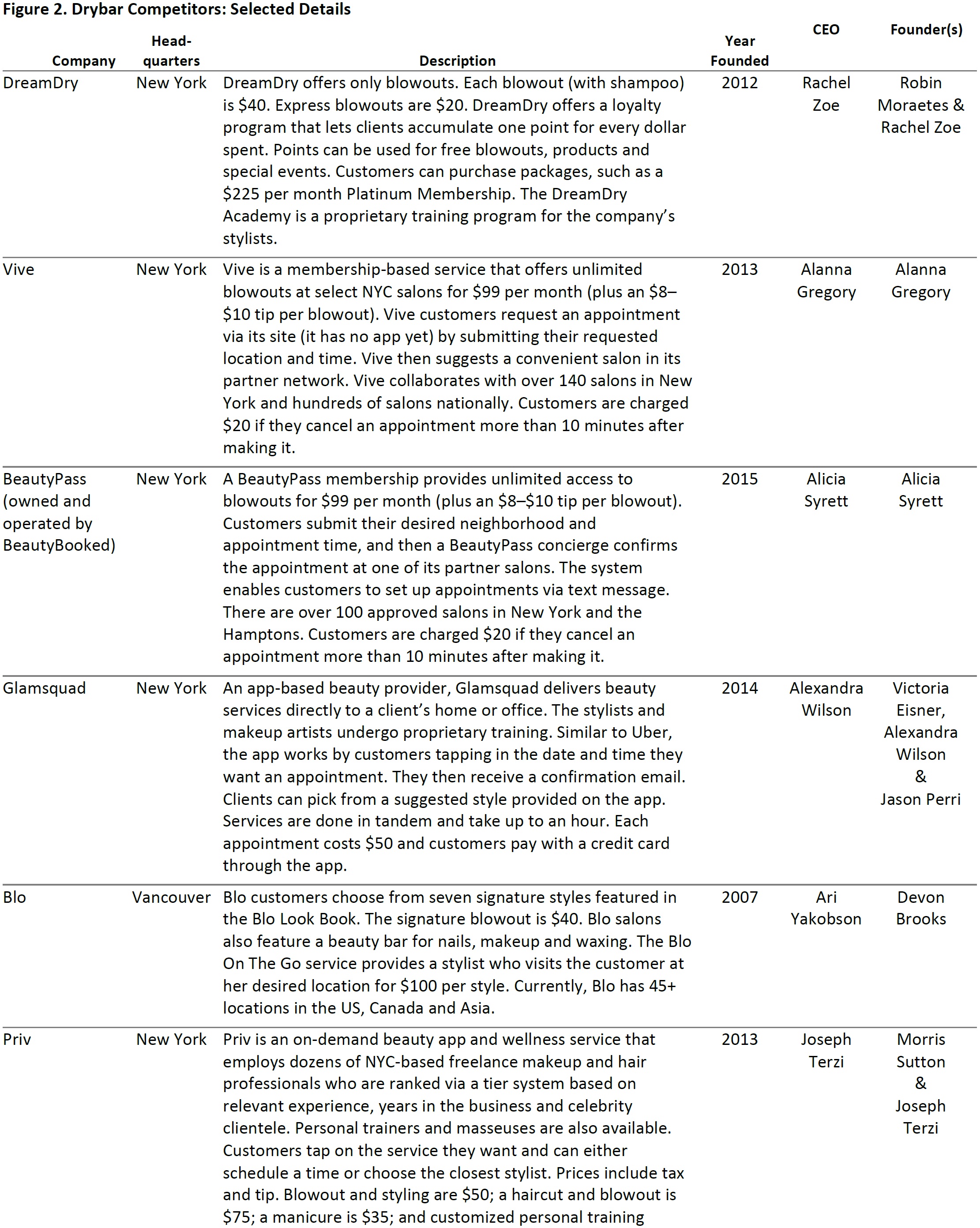
Source: Company Reports, Crunchbase, angel.co, Forbes

 Founded in 2009, California-‐based Drybar was one of the first salons to solely provide a hairstyling service known as a blowout. The service provides women a quick, affordable and pleasurable experience,and is disrupting the traditional salon industry.
Founded in 2009, California-‐based Drybar was one of the first salons to solely provide a hairstyling service known as a blowout. The service provides women a quick, affordable and pleasurable experience,and is disrupting the traditional salon industry.

 Customers can book an appointment via Drybar’s app, phone number or website. The salon experience begins with a consultation at the “bar,” where the customer flips through a look book to decide on one of seven styles that range from the “sleek and smooth” Manhattan to the “lots of loose curls” Cosmopolitan. The customer is escorted to the washroom and offered a complimentary water, coffee, wine, or champagne. One of the core components of the Drybar experience is that clients are offered a glass of champagne or wine as they are receiving a service, according to Webb and Landau.
All stylists are licensed cosmetologists. As the transformation takes place, customers face flat-screen TVs playing chick flicks such as Bridesmaids. The movies are subtitled to counter the distinctive music and sound from the blow-dryers. Once the stylist is finished, the client is turned around for the “big reveal.” Webb recently spoke at the Terry J Lundgren Global Retailing Conference and said, “we are selling happiness and confidence. We call this the magic moment.” The beautification process takes approximately 45 minutes and the customer’s new style typically lasts three to four days.
The salons’ décor, layout and customer service are keys areas of the business model. Aesthetically, all Drybars look roughly the same, thanks to Josh Heitler, the principal of a boutique architectural firm and now a partner in the company. Heitler came up with the design elements and the reasoning behind the name Drybar is evident in the design.
Customers can book an appointment via Drybar’s app, phone number or website. The salon experience begins with a consultation at the “bar,” where the customer flips through a look book to decide on one of seven styles that range from the “sleek and smooth” Manhattan to the “lots of loose curls” Cosmopolitan. The customer is escorted to the washroom and offered a complimentary water, coffee, wine, or champagne. One of the core components of the Drybar experience is that clients are offered a glass of champagne or wine as they are receiving a service, according to Webb and Landau.
All stylists are licensed cosmetologists. As the transformation takes place, customers face flat-screen TVs playing chick flicks such as Bridesmaids. The movies are subtitled to counter the distinctive music and sound from the blow-dryers. Once the stylist is finished, the client is turned around for the “big reveal.” Webb recently spoke at the Terry J Lundgren Global Retailing Conference and said, “we are selling happiness and confidence. We call this the magic moment.” The beautification process takes approximately 45 minutes and the customer’s new style typically lasts three to four days.
The salons’ décor, layout and customer service are keys areas of the business model. Aesthetically, all Drybars look roughly the same, thanks to Josh Heitler, the principal of a boutique architectural firm and now a partner in the company. Heitler came up with the design elements and the reasoning behind the name Drybar is evident in the design.
 In July, Drybar rolled out an in-home blowout option called Dry-on-the-Fly. The Uber-like experience is controlled by Drybar’s new app. The customer can book a stylist to come to her home, office, gym or hotel. The app shows the nearest stylists in the area and when they could arrive. With tip included, the service costs $75, and customers pay via the app.
In July, Drybar rolled out an in-home blowout option called Dry-on-the-Fly. The Uber-like experience is controlled by Drybar’s new app. The customer can book a stylist to come to her home, office, gym or hotel. The app shows the nearest stylists in the area and when they could arrive. With tip included, the service costs $75, and customers pay via the app.
 According to Webb, the top-selling item is the signature bright yellow Buttercup blow-dryer ($195). The second-most popular is the Hot Toddy heat protector/frizz fighter ($30). The products are found in Drybar shops and at Sephora as well as on QVC and the drybar.com.
According to Webb, the top-selling item is the signature bright yellow Buttercup blow-dryer ($195). The second-most popular is the Hot Toddy heat protector/frizz fighter ($30). The products are found in Drybar shops and at Sephora as well as on QVC and the drybar.com.

